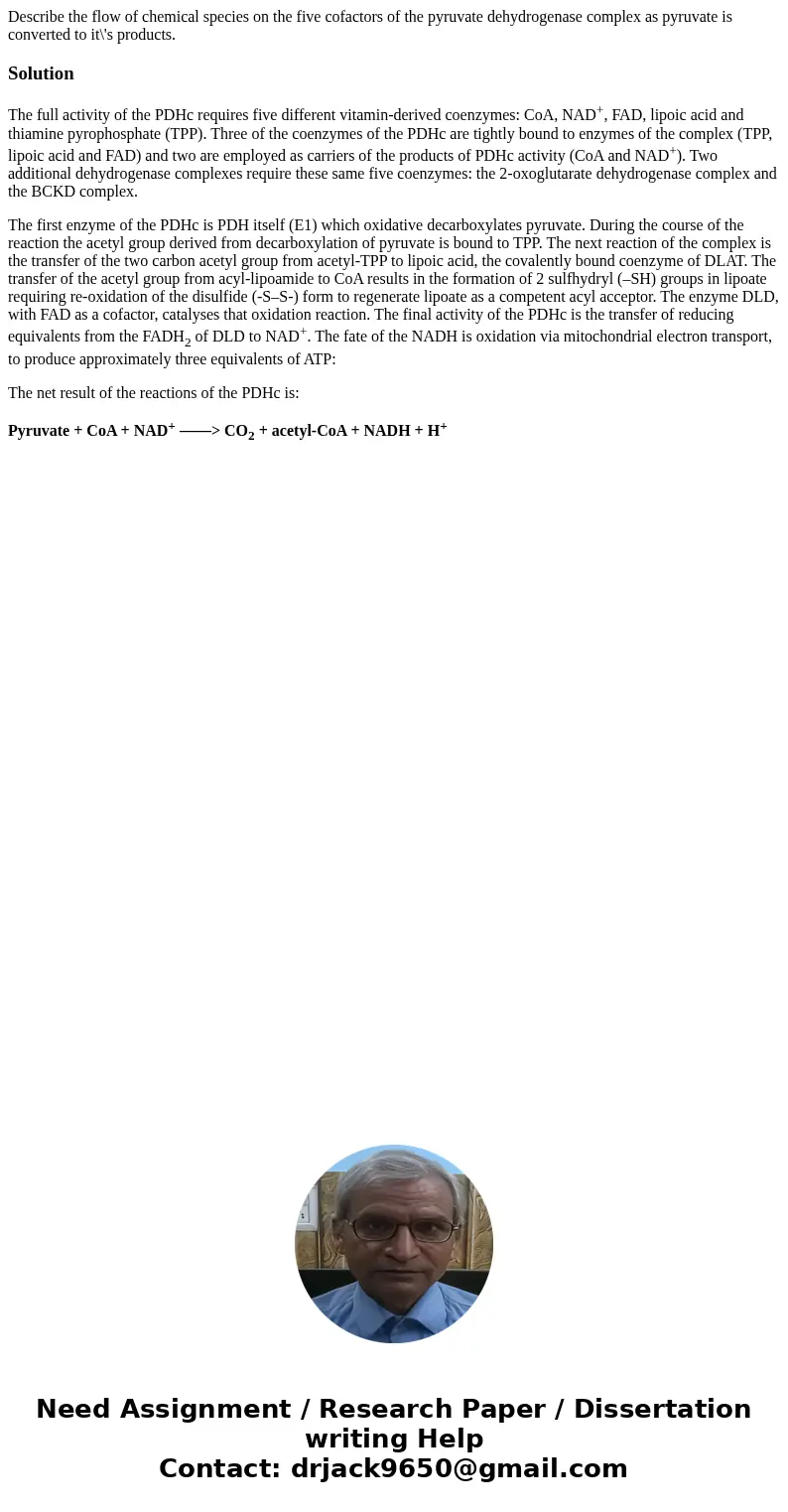Describe the flow of chemical species on the five cofactors
Describe the flow of chemical species on the five cofactors of the pyruvate dehydrogenase complex as pyruvate is converted to it\'s products.
Solution
The full activity of the PDHc requires five different vitamin-derived coenzymes: CoA, NAD+, FAD, lipoic acid and thiamine pyrophosphate (TPP). Three of the coenzymes of the PDHc are tightly bound to enzymes of the complex (TPP, lipoic acid and FAD) and two are employed as carriers of the products of PDHc activity (CoA and NAD+). Two additional dehydrogenase complexes require these same five coenzymes: the 2-oxoglutarate dehydrogenase complex and the BCKD complex.
The first enzyme of the PDHc is PDH itself (E1) which oxidative decarboxylates pyruvate. During the course of the reaction the acetyl group derived from decarboxylation of pyruvate is bound to TPP. The next reaction of the complex is the transfer of the two carbon acetyl group from acetyl-TPP to lipoic acid, the covalently bound coenzyme of DLAT. The transfer of the acetyl group from acyl-lipoamide to CoA results in the formation of 2 sulfhydryl (–SH) groups in lipoate requiring re-oxidation of the disulfide (-S–S-) form to regenerate lipoate as a competent acyl acceptor. The enzyme DLD, with FAD as a cofactor, catalyses that oxidation reaction. The final activity of the PDHc is the transfer of reducing equivalents from the FADH2 of DLD to NAD+. The fate of the NADH is oxidation via mitochondrial electron transport, to produce approximately three equivalents of ATP:
The net result of the reactions of the PDHc is:
Pyruvate + CoA + NAD+ ——> CO2 + acetyl-CoA + NADH + H+

 Homework Sourse
Homework Sourse